2025 Volkswagen ID.7 is a Large EV Sedan Flagship Promising Big Range

Larger than an Arteon, the ID.7 promises big space, big range, and a whole lot of cutting-edge tech when it arrives next year.
Volkswagen on Monday morning revealed the 2025 ID.7 in full, in front of assembled media in New York City. Teased earlier this year in color-changing form, the ID.7 will sit atop the VW sedan lineup in North America, debuting a highly aerodynamic shape, more powerful electric motor, and a massively revamped infotainment experience.
Now technically, at 195.3 inches (4,960 millimeters) long, the ID.7 is barely longer than a mid-sized sedan. That’s only an inch or so longer than the Honda Accord, and just 3.8 inches (97 mm) longer than VW’s own pretty Arteon. However, the new EV has a stretched wheelbase (116.8 inches / 2,967 mm) and an increased height (60.6 inches (1,539 mm).
Like the Toyota Crown with which it shares that latter measurement, the ID.7’s shape straddles the line between car and SUV, promising big cabin space and a more traditional drive experience. It’s a whole heck of a lot more sleek than the Japanese hybrid, however: VW quotes a coefficient of drag of just 0.23.
SEE ALSO: 2023 Volkswagen ID.4 First Drive Review: Locally Sourced, Base is AceThe styling itself doesn’t veer too far from the established VW formula. The thin LED headlights are clean in design, with a thin LED strip connecting them. A light-up VW badge sits front and center on the nose, filled in instead of an outline to signify this is an EV. Much of the fascia is closed off—aero efficiency, natch. In profile, the ID.7 shows off its family ties: black roof pillars, a contrasting metallic trim piece, and a subtly flared character line all recall the ID.4, but in a more elegant, low-slung package.
At the tail, the full-width LED taillight is white by default, the middle section only switching to red when the lights are active. A gloss black diffuser hangs out down below.
SEE ALSO: 2023 Hyundai Ioniq 6 Review: First DriveRolling stock is a staggered 20-inch setup, with 235-section tires up front and wider 255s out back.
New Motor, Bigger Battery (for Europe)
Under the skin, the ID.7 sits on an enlarged version of the MEB platform that underpins the ID.4 (and upcoming ID.Buzz). It will launch in single-motor, rear-drive form, debuting a more powerful motor. VW has increased the number of stator windings in the motor and added more powerful magnets. In addition, there is a new, combined oil- and water-cooling system for more consistent operating temperatures.
Total output jumps to 282 horsepower and 402 pound-feet of torque. For comparison, the ID.4’s figures are 201 and 229, respectively; the Arteon, 300 and 295.
The ID.7 will also debut a larger battery pack—but only for Europe. The 77.0-kWh (net) battery will be standard on both sides of the Atlantic, while the Old World will have the option of an 86.0 kWh setup. The former will continue to offer charging speeds up to 170 kW, while the new pack ups that to an even 200 kW. A pre-conditioning feature is used in combination with the navigation.
SEE ALSO: 2024 Volkswagen ID. Buzz Hands-On Preview: The ‘Bus is BackVW is quoting a huge 435 miles (700 kilometers) of range on the WLTP cycle; we expect a difference of at least 20-percent from the EPA.
The ID.7 will be the first electric VW to feature adaptive dampers, with driver-selectable drive modes. Volkswagen is targeting a low 5-second dash to highway speeds.
Oodles of Tech
Inside the cabin, Volkswagen is loading up the ID.7 with tech befitting its flagship status. The seats come with a massaging feature, both in the lower cushion and back. VW will also debut an adaptive Climatronic function for the front seats. A massive panoramic sunroof lets the light in—or not, as it’s an electrochromatic setup. At the touch of a button (or voice command), the glass can go from transparent to opaque.
Volkswagen has shrunk down the standard instrument panel behind the wheel, even further than the one in the ID.4. To augment the setup, the ID.7 comes with a standard adaptive head-up display. Since that’s where most of the info is, VW has implemented HUD controls right on the steering wheel.
The rest of the interior is clean and minimalist in execution. There’s the requisite ambient lighting and a center console pass-through for larger items. The vents are adaptive, able to swivel both horizontally and vertically for optimized airflow. That being said, users can still adjust them manually if they prefer. The heating (or cooling) begins as the driver approaches the car too, not just once they’ve turned it on.
VW’s voice assistant is of course on board for the ride. Folks can ask the car to adjust the roof transparency, for example; if the driver tells the car “my hands are cold,” the heated steering wheel will activate and the vents will point hot air towards the driver.
Sitting in the center is a massive 15.0-inch touchscreen. Volkswagen’s current system has been the subject of much criticism, so the German manufacturer has tweaked the setup here. Climate controls are always visible along the lower section, while users can customize the top row for their own most-used apps. The screen can be split into multiple panels, as well. And yes, the adjustment sliders are finally illuminated.
The ID.7’s tech suite includes a more robust lane guidance system, which can now use curbs instead of painted lines to determine road placement. There is now a parking record feature too, which saves a route of up to 165 feet. The driver can either stay in the car or overlook the procedure from the smartphone app. Beyond that, users can beckon the ID.7 out of any parking space, up to 81 feet. Europe will also utilize swarm data, vehicle-to-vehicle info enabling the ID.7 to glean speed limit info from other cars further down the road.
The 2025 Volkswagen ID.7 will go into production later this year at VW’s Emden plant. It will arrive on our shores later in 2024. We expect pricing to sit right around where the Arteon ends—so over $50,000 USD.
Discuss this story on our Volkswagen ID.7 forum
Become an AutoGuide insider. Get the latest from the automotive world first by subscribing to our newsletter here.

Kyle began his automotive obsession before he even started school, courtesy of a remote control Porsche and various LEGO sets. He later studied advertising and graphic design at Humber College, which led him to writing about cars (both real and digital). He is now a proud member of the Automobile Journalists Association of Canada (AJAC), where he was the Journalist of the Year runner-up for 2021.
More by Kyle Patrick




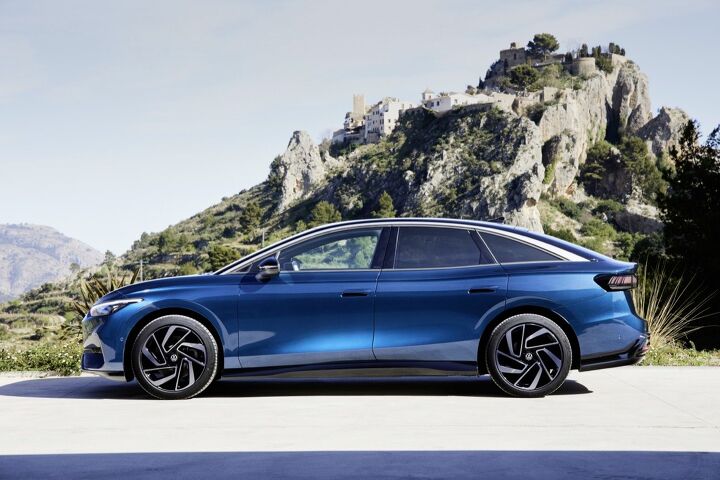






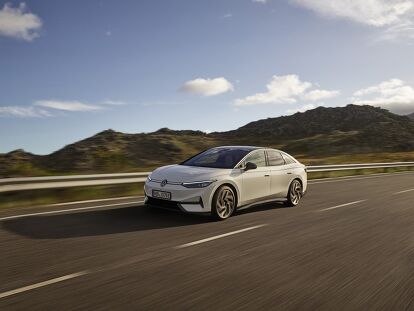













































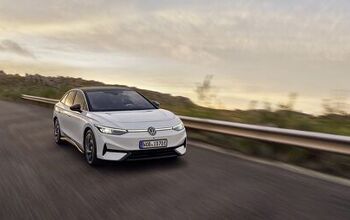
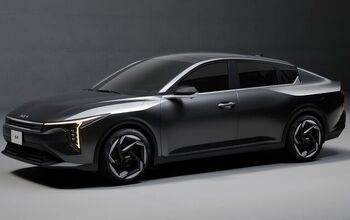
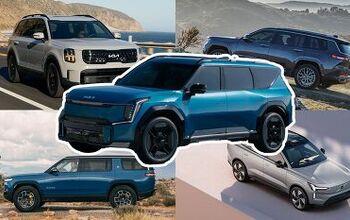

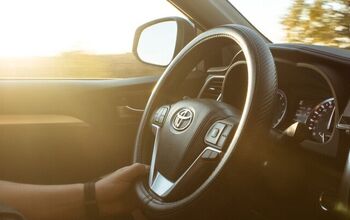


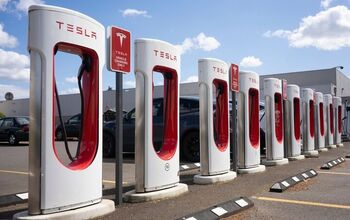
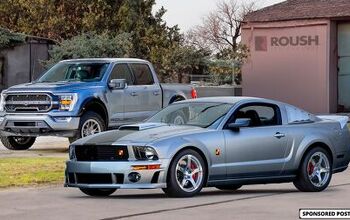
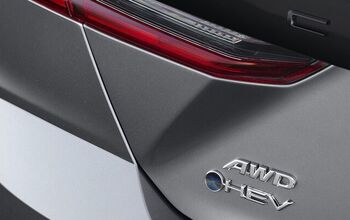
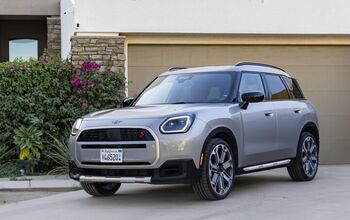
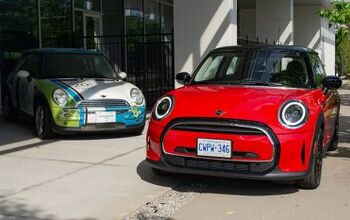
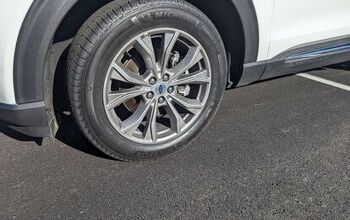
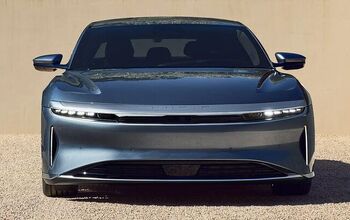

Comments
Join the conversation
will believe it when it hits us shores in numbers. still waiting for any suv's let alone sedans, mass EV market on any real EV sits at what 9 vehicles besides Tesla, VW. 1 - ID 4 Nissan - 2. Leaf Arryia, just ramping up Kia - 1 EV6, niro EV Hyundai, 2, Ioniq 5 and 6 but both really just getting goiing. not mass produced Toyota 1. BZV but range is limiting Subaru 1 See above Ford 1 MACH E F150 is too pricey aand range is bad GMC 0 HUmmer is not even going to be mass produced